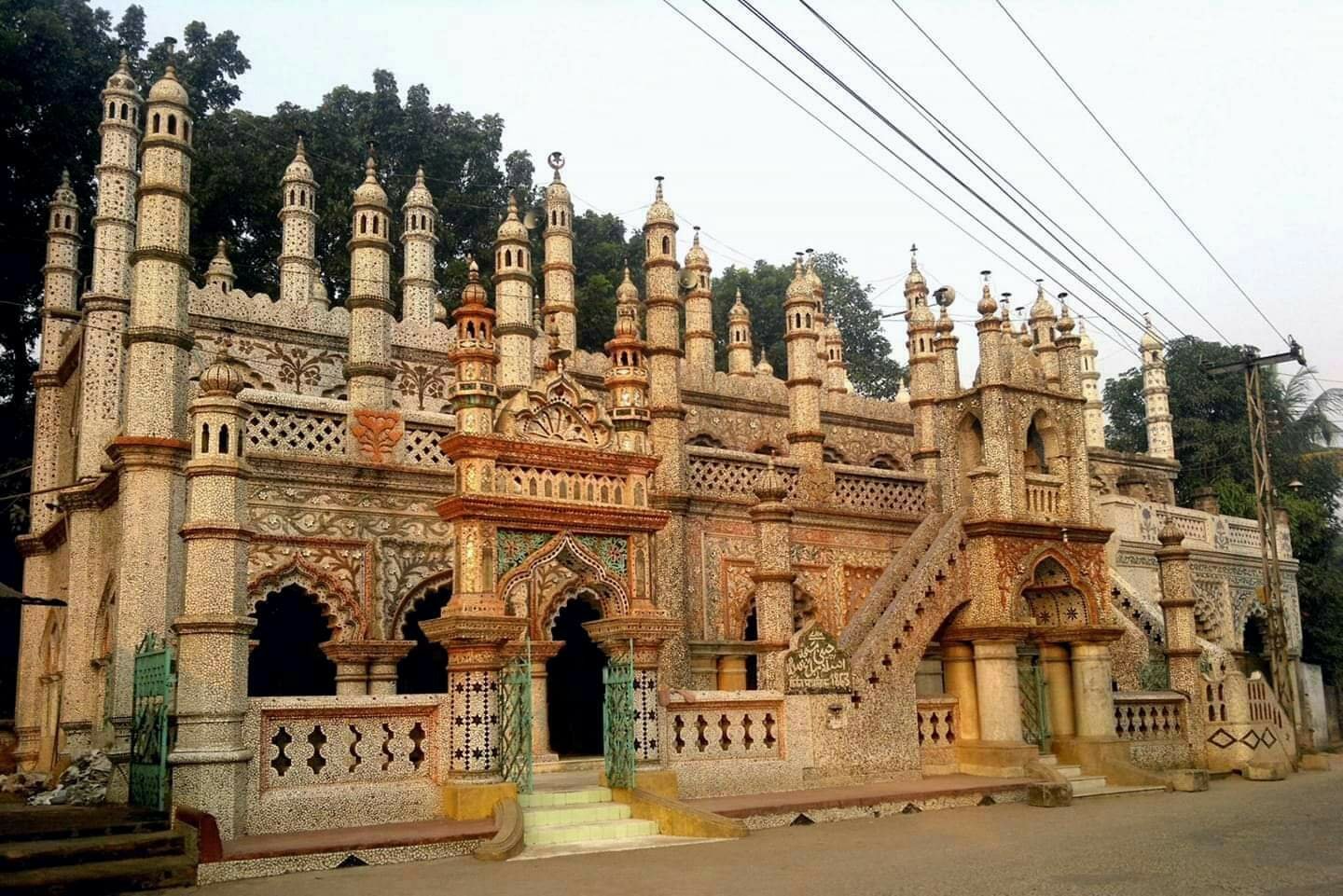
Notable historical mosque of Nilphamari district ‘Chinese mosque’. Located 20 kilometers south of Nilphamari Sadar in the area called Islambagh of Syedpur Upazila. In 1863, two local residents named Haji Baker Ali and Haji Muku built the mosque with rhythm and bamboo in the Islamabad area of Syedpur city. Later, the mosque was converted into a tin room with the help of the locals. After that, the people of the area formed a fund to build the mosque, then the construction work of the mosque started. The first part of the mosque was constructed in 1920 by the initiative of Haji Hafiz Abdul Karim and the second part of the mosque (South) was constructed in 1965 After a few years of the war of liberation, the third part (north part) of the mosque was constructed. That means the mosque is the witness of the three times of British, Pakistan and Bangladesh. To enhance the beauty of the mosque, fractions of ceramic leaf and glass fractions are installed on the walls of the mosque. This method is called ‘ making sugar ‘ or ‘ work of sugar grain ‘. Originally from here the mosque is called ′′ sugar mosque Such work can be seen in many historical buildings of this country, among them ′′ Bajra Shahi Mosque ′′ is one of the most important in Begumganj, Noakhali. Ceramic materials used for the beauty of the Chinese mosque were brought from Kolkata This historic mosque was designed by Md. Mokhtul and Nabi Box. The impact of Mughal architectural style in the construction of a Chinese mosque can be noticed. The walls of the mosques have various paintings including vase, flower bushes, rose flowers, a flower in a circle, moon star. A lot of marble stones are used to build a mosque. There are 3 large dome with 32 small and large towers. The mosque is double. Nice beautiful mimbers for giving ajaan at the entrance. There are 243 Shankar marble stones in the mosque. The balcony of the mosque is tied with white mosques. The entire component of the mosque is wrapped in colorful stone. There is a door to the north and south for the entry of the mosque.
Acceptance:
- Bangladesh Archaeology Department.
- Wikipedia.
- Archaeology of Bangladesh.
- Local inhabitant.
- S M Nuruddin
- Khokon & Jubaid Masum
